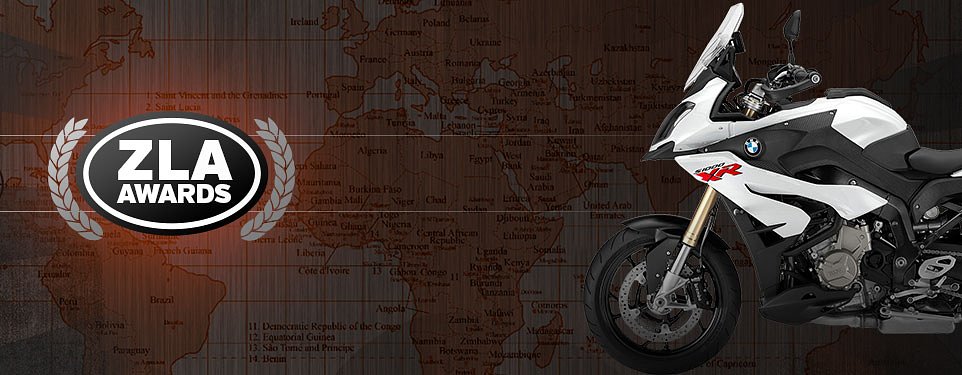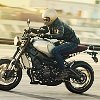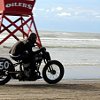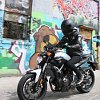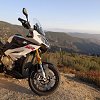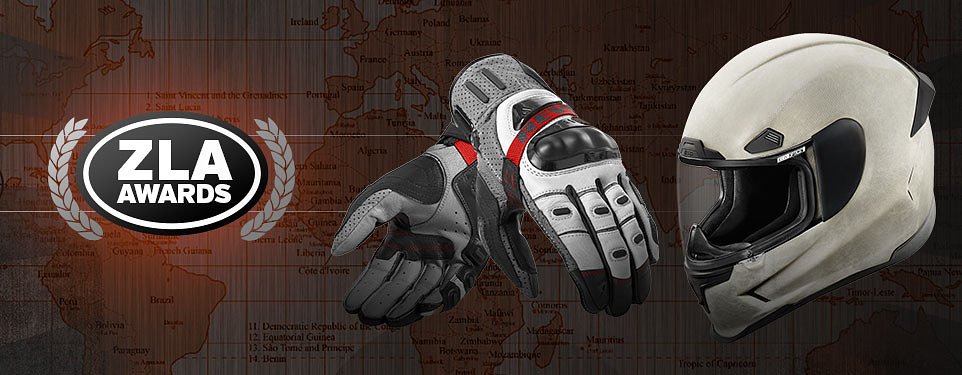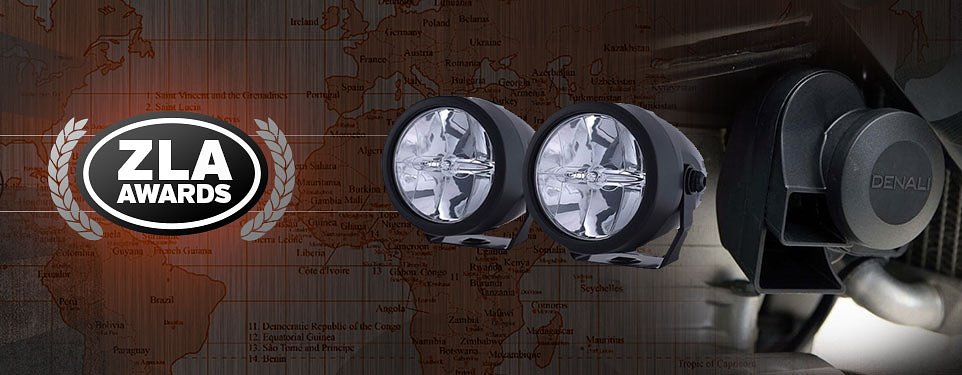The ZLA Awards for apparel, parts and accessories are great, but those are still the side dishes.
Motorcycles are the main course. Everything else we buy or use, learn to love or toss aside, is based around how, where and what we ride. So what caught our eye in terms of trends in motorcycles in 2015? Read on.

It’s a small world and small is beautiful

Metric Motorcycle Media Lead
In 2015, we saw the continuation of a sweeping trend in motorcycling that transcends any particular make or model. Manufacturers are shifting their efforts toward smaller displacement motorcycles. From cruisers to sport bikes to long-haul touring machines, we have seen OEMs give some needed love to the sub-liter displacement motorcycles.
On the cruiser side, Kawasaki introduced the new Vulcan S lineup. What’s really exciting here is the “Ergo-Fit” system, which allows you to customize the bike to fit your size. After all, the tall lanky guy doesn’t necessarily want a bigger bike, just a more comfortable one. Yamaha has introduced newly styled packages for its successful Bolt and Harley-Davidson has gotten in on the fun with the Street 500 and 750. All of these are nimble bikes in a cruiser world known for being big and brawny.

On the sporty side, Kawasaki no longer has the 300 cc class to itself. The Yamaha YZF-R3, the Honda CBR300R and the KTM RC390 are all full-fairing sport bikes, while the Honda and KTM are also available undressed, with the CB300F and the 390 Duke I recently reviewed. BMW is set to compete next year with its G 310 R.

For those looking for a solid, mid-sized touring bike, Kawasaki has you covered with their redesigned Versys 650 LT, which includes color-matched hard bags as standard equipment. If you want something a bit more adventurous, Suzuki has a more off-road-worthy XT version of its ever-popular V-Strom 650 that comes with spoked wheels and aluminum luggage. Triumph even freshened up the Tiger 800 with a new electronics package, the first to bring electronic cruise control to a mid-size adventure bike.
I know, I know... a part of us still gets excited to hear about bikes like Kawasaki’s 300-horsepower H2R or Ducati’s new 205-horsepower Panigale 1299. But at the end of the day, new riders need bikes that are accessible. Most of us need motorcycles that offer a lot of value for our money. And I am personally more interested in bikes that put out power I can actually use on the street.
Fortunately, 2015 brought us all of that.
Old is new and old is back
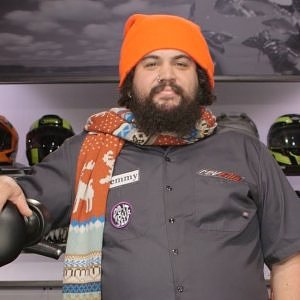
Motorcycle Media Lead
2015 had more than a few notable trends, but two things caught my attention and will probably define (roughly) this time period in Motorcycle History.
The first is this overarching theme of “Everything Old Is New Again.” Triumph recooked the Modern Classics line, which is a paean to another generation. Harley’s still making money selling the styling that’s captivated a century of riders. Suzuki brought back the Bandit 1250S, which is not meant to be retro, but kind of is. Yamaha unveiled its XSR900 and Ducati keeps adding Scramblers.
None of these are bikes determined by a racing class, and that’s a good thing.

Unlike the rest of the world, the American market has traditionally demanded fast, large bikes that are not necessarily practical. Now, the pragmatism of European and Asian riders is being thrust upon U.S. riders as manufacturers move increasingly to global bike platforms and U.S. demand accounts for less of the total.
Mix the classic styling and layout of motorcycles from bygone eras with some modern upgrades, like fuel injection, good brakes and decent suspension, and you come up with a pretty damn good bike that looks great and is fun to ride. Motorcycles that resemble our dads’ bikes are surging in popularity. Maybe Pop knew something we’re just learning.
The second trend I noticed in 2015 was the rise in the popularity of the flathead, specifically Harley-Davidson flatties, in the vintage world. Seriously, they’re everywhere. Everyone seems to be building VLs and ULs, and also the 45 ci bikes, like Gs and WLs. Carmine Bellamore of VCP just put together a 1946 Big Twin. Nick Toscano and Josh Kohn ran flatties in The Race Of Gentlemen this year, Nick on a 1947 Big Twin and Josh on a 1937 45 ci. Kyle Edgar put together a beautiful 1946 for Born-Free 7. I mean, would this shirt have sold at all five years ago?

I think a few factors are driving that trend. First, Knuckleheads are through the roof, price-wise, but there are still some old side-valves to be found for blue-collar coin. Next, events like TROG and Born-Free are really exposing riders to these old gems who might not have even known they existed. Plus, the flattie really is about the oldest Harley one can purchase, find some parts for and actually ride at today’s road speeds. That’s helped by the surge in available repop parts from companies like Flathead Power and Replicant Metals.
Regardless of the reasons, seeing nice old flatheads tearing up the tarmac again, and seeing riders on simple, classically styled motorcycles, is doing my heart a world of good.
The evolution of the sport-touring motorcycle

Managing Editor
Wait a minute, I thought 1929 was the year of the flathead.
Oh, never mind, it’s just Lemmy. Here we are in 2015, and I’ve also noticed the themes my TeamZilla colleagues mentioned above. But the most interesting trend to me is the growth, maturation and influence of the new breed of sport-touring motorcycles. And we haven’t even settled on a name for them yet. Crossovers? Sport-adventures?

This isn’t just a 2015 phenomenon, because this class has been emerging for a while. I’m talking about bikes ranging from the technologically sophisticated and upscale BMW S 1000 XR that Lemmy recently reviewed to the affordable Yamaha FJ-09 and Kawasaki Versys 1000 LT (review coming soon) and, of course, the pioneer in the class, the Ducati Multistrada. Plus, KTM just unveiled its forthcoming Super Duke GT and the Aprilia Caponord shed its off-road pretensions and donned a 17-inch front wheel to join this crowd, too. These bikes all mix some of the dimensions and ergonomics of adventure-touring bikes but strip away most of the changes made for off-road use to focus on better street performance.
The sport-touring class was always a hard one for manufacturers to pin down, because one rider’s sport-touring ideal is a Honda CBR600RR with a set of soft saddlebags, while a Yamaha FJR1300 rider insists that sport-touring without shaft drive, an electrically adjustable windscreen and cruise control is simply barbaric. The new class of adventure-sports changed the discussion entirely, however. Instead of approaching sport-touring by making a sport bike more comfortable, or a touring bike lighter and more agile, they take the already-comfortable adventure bikes and equip them for street and highway.

Riders love ‘em. And the new bikes are killing off the old ones. Look around now for the sport-bike-made-comfortable approach and basically you find the Honda VFR800 and the Kawasaki Ninja 1000. The former isn’t selling well and I wonder how long the latter will stay in the lineup now that it has internal competition from the Versys 1000 LT.
Motorcycle sales in the United States are still about 40 percent below the peak they hit before the financial crisis. When I talk to people in the industry, they wearily mention the challenge of doing the same work with fewer people and resources. The sales plunge forced the manufacturers to reassess and innovate, however, and I believe that led to the positive trends we’ve cited here, from more attention to smaller bikes, to modern bikes with retro style, and the emergence of a new class of sport-tourers. (OK, it doesn’t explain the flatheads, but you get my point.)
So while 2015 may not be the best of times to manufacture and sell motorcycles, it’s an exciting time for those of us who ride them, buy them and love talking about them here on Common Tread.




